Classic geometrical illusion 3
since February 14, 2005
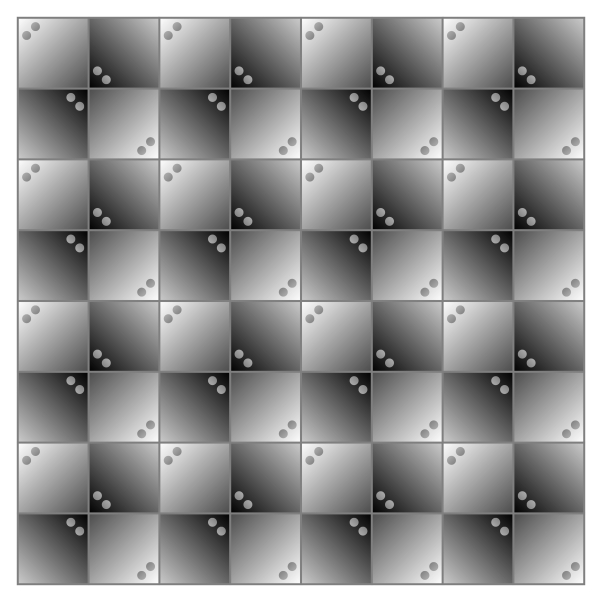
"Packed rays"
Each ray is a square but appears to be distorted by the illusion of shifted gradations (Kitaoka, 1998). In addition, the eyes of the darker rays appear to be lighter than those of the lighter rays, but they are identical in luminance gradient. Moreover, some parts of the vertical or horizontal lines appear to be lighter or darker than other parts (Logvinenko illusion?).
Copyright Akiyoshi Kitaoka 2006 (June 12)
Kitaoka, A. (1998). Apparent contraction of edge angles. Perception, 27, 1209-1219.
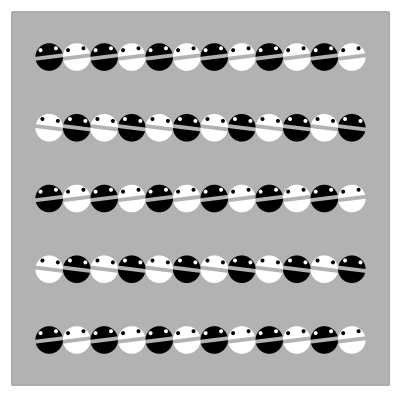
"Hebi rokujukkyodai"*
*Hebi = snakes, rokuju = sixty, kyodai = brothers
Although each line made of snake's mouths is horizontal, the uppermost one appears to tilt counterclockwise, and the next one clockwise, and so on. This tilt illusion is the Fraser illusion. In addition, each row appears to sway horizontally.
Copyright Akiyoshi Kitaoka 2006 (June 7)
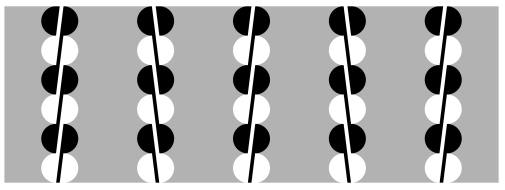
"Dango sanjukkyodai"*
*Dango = kind of cake, sanju = thirty, kyodai = brothers
Although each spit made of oblique line segments is vertical, the leftmost one appears to tilt clockwise, and the next one counterclockwise, and so on. This illusion is the Fraser illusion.
Copyright Akiyoshi Kitaoka 1999?
reproduced June 7, 2006
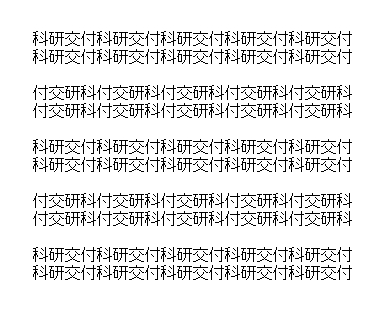
"Grants-in-aid-for-scientific-research tilt illusion"
The rows of words appear to tilt alternately. "![]() " are the Chinese characters that mean "Granting the grants-in-aid for scienctific research from the government of Japan".
" are the Chinese characters that mean "Granting the grants-in-aid for scienctific research from the government of Japan".
Copyright Akiyoshi Kitaoka 2006 (April 25)
Professor Hiroshi Ashida pointed out an anomalous motion illusion in this image. <April 27, 2006>
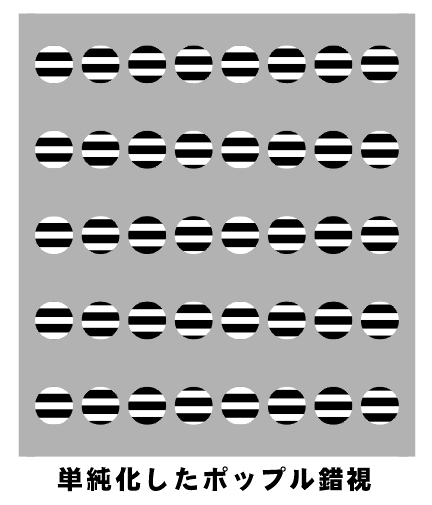
"Rotating Jupitar" or Simplified Popple illusion
Each row of circles is horizontally aligned but the uppermost, the middle and the lowermost rows appear to tilt counterclockwise while the other two clockwise.
Copyright Akiyoshi Kitaoka 2006 (February 24)
For the Popple illusion (phase-shift illusion), see below:
Popple, A. V. and Levi, D. M. (2000) A new illusion demonstrates long-range
processing. Vision Research, 40, 2545-2549.
Popple, A. V. and Sagi, D. (2000) A Fraser illusion without local cues? Vision Research, 40, 873-878.
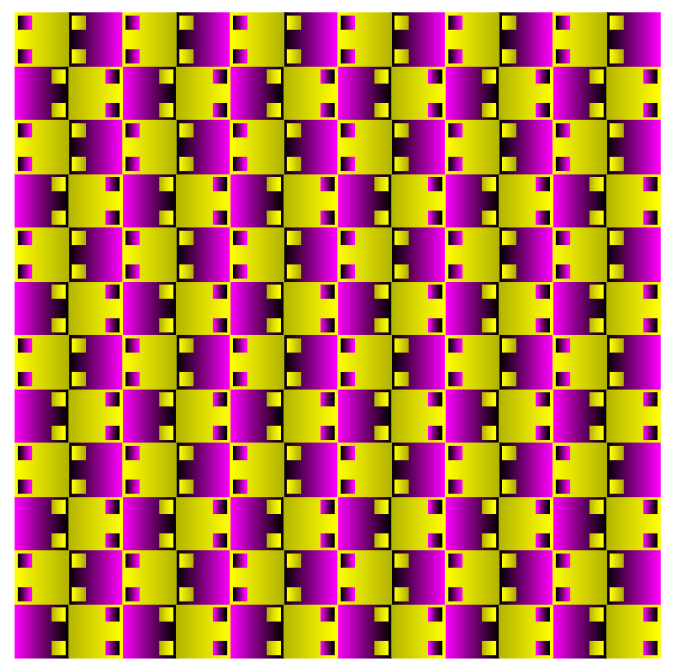
"Sekigahara no tatakai"*
*One of the largest civil wars in Japan (1600AD)
Horizontals appear to tilt though this image consists of only squares.
Copyright Akiyoshi Kitaoka 2006 (February 24)
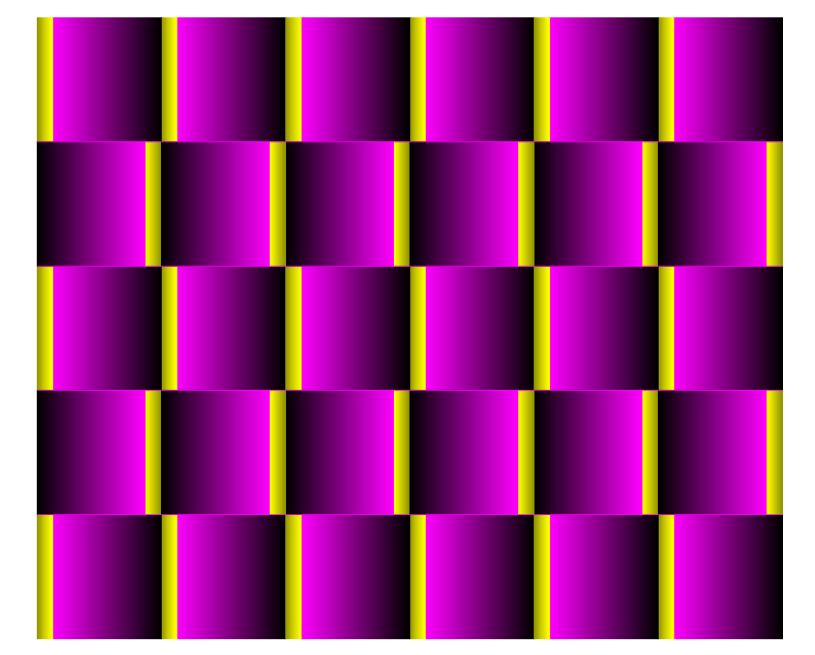
"Purple Café Wall"
The four thin lines appear to tilt alternately. In addition, the five rows of squares appear to move alternately.
Copyright Akiyoshi Kitaoka 2006 (February 15)
cf. Kitaoka, A., Pinna, B., and Brelstaff, G. (2004). Contrast polarities
determine the direction of Cafe Wall tilts. Perception, 33, 11-20
Roncato, S. (2000) The effect of luminance variation on the apparent position
of an edge. Perception & Psychophysics, 62, 762-785
Black thin lines change the orientaion of the tilts.
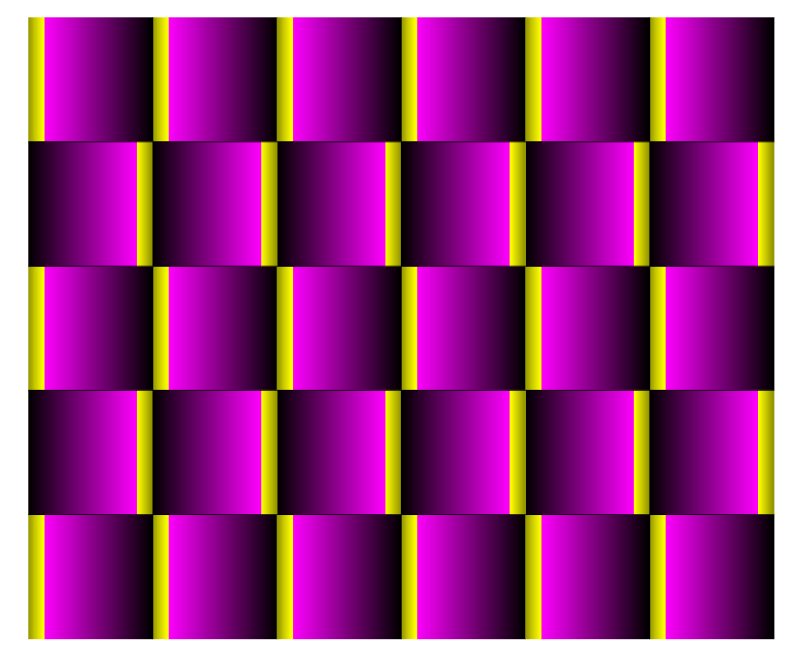
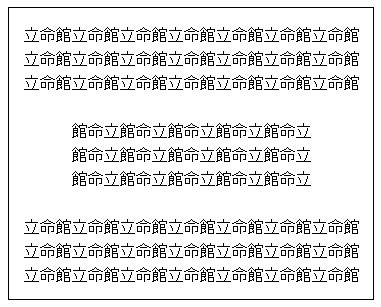
"Ritsumeikan tilt illusion"
The upper or lower theree rows appear to tilt clockwise while the inset appears to tilt counterclockwise. "![]() " are the Chinese characters of "Ritsumeikan".
" are the Chinese characters of "Ritsumeikan".
Copyright Akiyoshi Kitaoka 2006 (January 11)
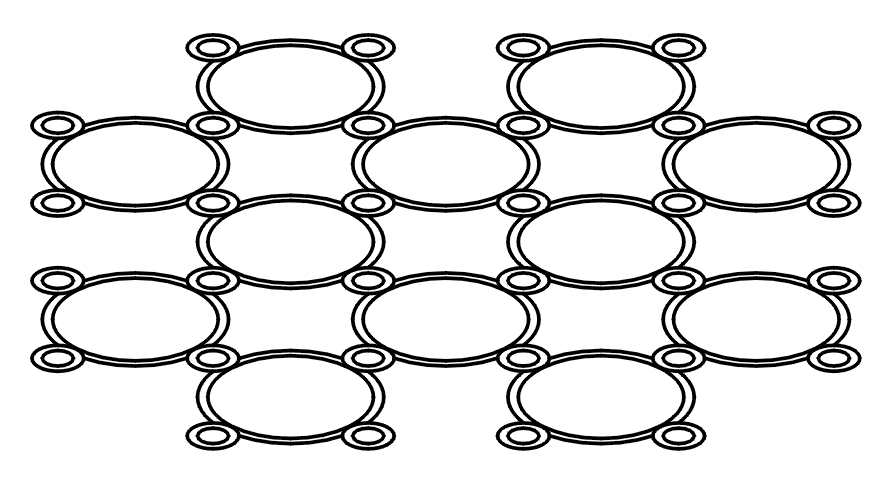
"Illusion of the Gakushi-kaikan"
Each small ellipse is horizontally oriented but appears to tilt toward the neighboring large ellipses.
Produced by Akiyoshi Kitaoka 2005 (October 12)
Dr. Yasushi AGATA, University of Tokyo, discovered this illusion on the carpet of the Gakushi-kaikan, Tokyo, Japan.
Gakushi-kaikan (in Japanese)
Classic geometrical illusion 2
Classic geometrical illusion 1